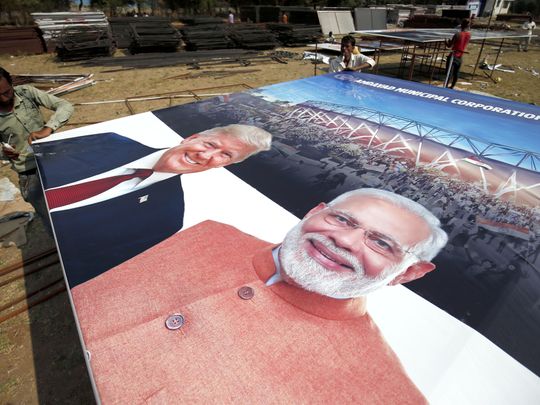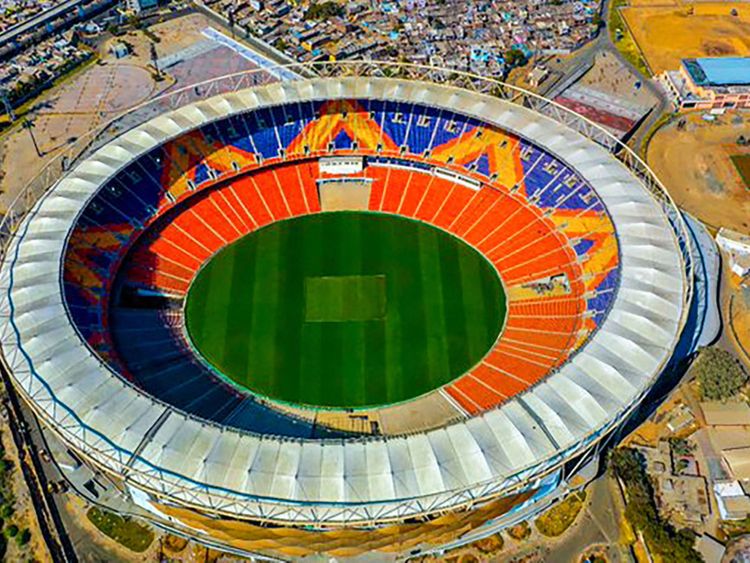
Kolkata: Ahmedabad is all set to roll out the red carpet. So is New Delhi. But the looming clouds were unmistakable when United States Trade Representative, Robert Lighthizer, cancelled his scheduled visit to New Delhi last week. And now, even barely 96 hours before US President Donald Trump’s first state visit to India, it is still not certain whether the mandarins on either side of a highly protocol-driven diplomatic core team will be able to thrash out a trade agreement, marking a ‘victory’ of sorts for both Washington and New Delhi.
If the buzz that is reportedly emanating from both Washington and New Delhi is anything to go by, then even a limited trade deal between the two sides looks quite unlikely at this stage as neither Capitol Hill nor South Block are ready to cede too much ground to each other, though both parties are still eager to work out the contours of some kind of a rapprochement deal on bilateral trade and commerce to ensure that Trump’s visit to the world’s largest democracy and the globe’s fifth largest economy doesn’t miss out on some positive headlines.
THREE AREAS OF CONCERN
A source in Washington told Gulf News on Wednesday that while the US administration is still keen on having some sort of a broad-brush framework in place ahead of Trump’s visit, there are three primary areas of concern for Washington that have prevented any deal being hammered out yet. “India is very keen on having itself reinstated on the GSP (Generalised System of Preferences), but the problem for the Trump administration is that New Delhi still has to cover a fair bit of ground in three very crucial areas — high customs duty, protection of individual data rights, and eCommerce regulations. These are issues that are very sensitive for India and New Delhi is unlikely to relent much on these counts. For Washington, too, these are precisely the areas where it would want South Block to allow a more hospitable playing field to US companies and entrepreneurs,” a Washington-based senior Indian journalist told Gulf News.
WHAT IS THE NATURE OF CURRENT TRADE TENSION?
Richard Rossow, the Wadhwani Chair in US-India relations at the Washington-based Centre for Strategic and International Studies (CSIS) put things in perspective. In a Press call, transcripts of which were shared with Gulf News on Wednesday, Rossow, commented: “The United States has revoked GSP benefits to India. India was hit pretty hard with the steel and aluminium tariffs that were applied globally. India issued a set of retaliatory tariffs against the United States. And again, these other areas we have seen of import substitution and tariff hikes, they really kind of triggered the level of trade tensions that we see today.”
WHAT CAN HELP RESOLVE THE SCENARIO?
Rossow further suggested that there can be a modest package of things that India can put on the table that is unlikely to hurt the Indian Government’s domestic base. As a case in point, Rossow cited lowering of import duties on specialised medical equipment and on Harley-Davidson bikes can help assuage US concerns to a large extent. After all, these are segments where Indian manufacturing doesn’t have a substantial role.
Rossow was still hopeful that some significant announcement in terms of a trade deal may still happen while Trump is in India. “We [the US] have a number of major defence platforms that we’ve been looking to sell to India. We’ve been looking for India to purchase additional oil and gas. So I think the president goes in with a clear set of objectives, a broad-brush trade agreement to remove impediments, hoping to win agreements on sale of US defence and hydrocarbons,” Rossow explained.













